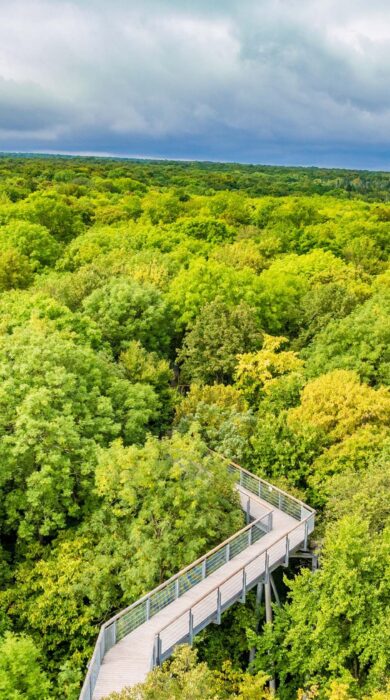
Best for nature: 12 of Germany’s top natural experiences
Get ready to hop in a kayak for a quiet canal paddle or wander where witches roam – these are 12 of Germany’s top natural wonders…
From vast tidal mudflats to pristine alpine forests and everything in between, Germany has extraordinary natural diversity to be found in every corner of the country. Get ready to hop in a kayak for a quiet canal paddle or wander where witches roam – these are 12 of Germany’s top natural wonders…
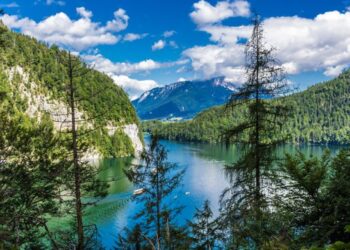
1. Berchtesgaden National Park
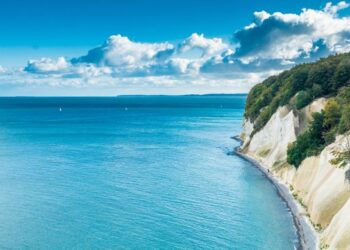
The only national park in the German Alps, legend has it that when God hurried the angels responsible for spreading the world’s wonders, they accidentally dropped them all here instead. That’s exactly how Berchtesgaden National Park feels: its cloud-shrouded mountains, thick alpine forests and crystalline lakes seem so perfect they could only be fashioned by a higher divinity. A plethora of hiking trails make it easy to wander to your heart’s content, but make sure you pick one that takes in Lake Königssee, whose emerald-green waters appear drinkably pure. Not bad for somewhere that was, for all intents and purposes, a mistake.
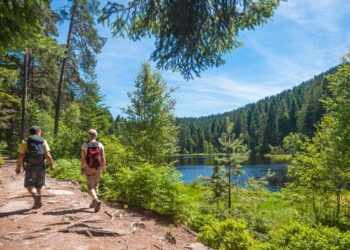
2. Rügen Island
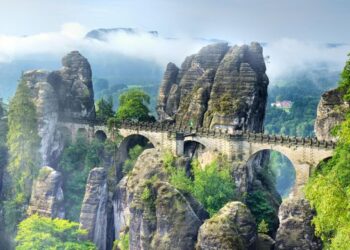
Germany may not be the first place you think of for a beach break but let Rügen Island convince you otherwise. Bobbing off the northern coast, locals have long had a soft spot for Rügen as a prime destination for a domestic getaway. The 56km of flour-white sands are the biggest lure; on a sunny summer’s day it feels far more Caribbean here than Baltic. But its status as Germany’s largest island means there are plenty of places to escape the crowds. Its own national park, Jasmund, is one of Rügen’s quieter corners and its ancient beech woodland and orchid-speckled meadows are a delight to stroll. Reach the island’s fringes and you’ll spy chalk cliffs so white they’d make Dover envious.
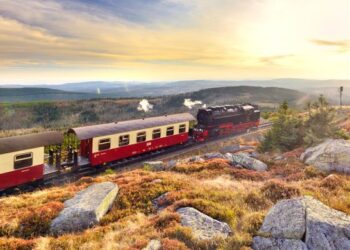
3. Black Forest National Park
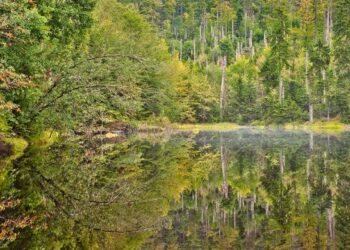
The Black Forest conjures up images of cuckoo clocks, cherry gateaux and folk tales woven by the imaginations of the Grimm brothers. And the teal-hued valleys, heather-flecked moors, dark forests and multi-stepped cascades of Black Forest National Park really do look like they’ve been ripped straight from a child’s bedtime story. Slow travel is the best way to experience this wild tapestry and a hike or cycle along its trails will take you to some of its top-ticket sights, including Allerheiligen Waterfalls and the ink-black lake Wildsee. Just don’t be surprised if you see Little Red Riding Hood or Hansel and Gretel peeking out from behind a tree along the way…
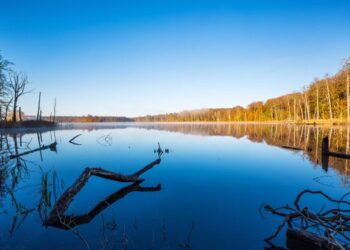
4. Saxon Switzerland National Park
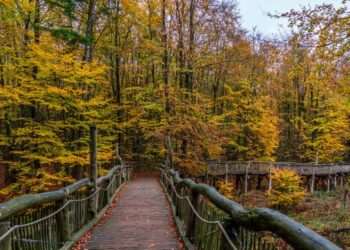
A rugged landscape of unique rock formations, Saxon Switzerland National Park has been 100 million years in the making. Battered by wind and weathered by the waters of the Elbe River, Saxon Switzerland’s vistas have morphed into a rocky fantasia of bruised cliffs, tabletop peaks and finger-like columns. The park’s poster child is the otherworldly Bastei Bridge, a 19th-century sandstone bridge that weaves in-between a row of jagged pinnacles. The 700-plus summits make it a haven for climbers but the 400 sq km of paths make it very friendly for walkers, too.
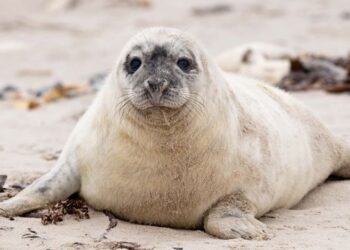
5. Harz National Park
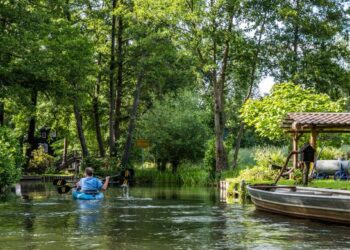
Tell any German you’re off to explore Harz National Park and a cold chill might run down their spine, such is the folklore that lingers over it. Barren moorland, moss-covered forest and trickling streams certainly create a mysterious landscape, but the legendary myths which enshroud Harz are as thick as the mist which wraps around its mountains. Everything from goblins to emperors and devils are said to have patrolled this land at one time or another and on April 30 each year, warlocks and witches riding broomsticks and goats are said to descend on the park’s highest peak, the Brocken. Go today and you’ll more likely spot lynxes, peregrine falcons and red deer. Oh, and maybe the odd broomstick.
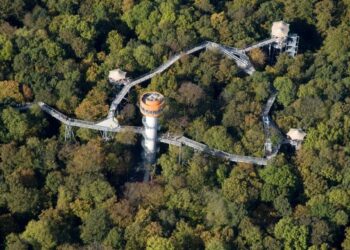
6. Bavarian Forest National Park
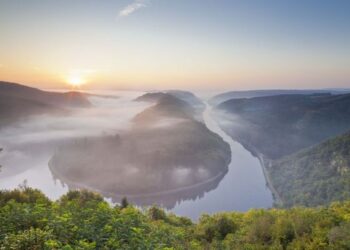
Established as Germany’s first and largest national park, Bavarian Forest is a huge wild swathe in southern Germany. This is German wilderness at its classic best: pristine woodland, granite peaks carpeted in trees and mirror lakes serving up perfect reflections. Though its vistas have often been splashed across glossy brochures, Bavarian Forest National Park remains remarkably seldom visited by visitors, with many preferring to head to the Black Forest. Their loss is your gain and the park’s unspoiled nature means there is an abundance of wildlife to spot, including brown bears, European bison and wolves via plenty of hiking and cycling trails and even a treetop walkway.

7. Müritz National Park
A watery wonderland just a three-hour drive from Berlin, Müritz National Park is affectionately known as the land of a thousand lakes. Though the figure is closer to 100, this web of streams, bogs, wetlands, rivers and pools make it seem very much like the former. Within the gaps are ancient beech forests and sprawling moors; mix the two together and you get a brilliant patchwork of blue and green. While there’s no shortage of walking trails, Müritz really ought to be explored on water, whether that’s paddling in a kayak in on an old-fashioned steamboat cruise.
8. Eifel National Park
Shaped by volcanic activity across millennia, Eifel National Park is a destination of astonishing diversity. Hire a car and drive along the 280km-long Volcano Route to stumble across crater lakes, extinct volcanoes and geysers, pit-stopping along the way to lace up your boots and wander untamed gorges, valleys and meadows. Eifel also boasts an unusually high number of endangered plants and animals – 2,170 – so keep your eyes peeled for wildcats, black storks and Eurasian eagle owls as you roam. Eifel even throws up surprises after dark: its certification as an International Dark Sky Park promises jet-black skies bulging with stars.
9. Wadden Sea
Stretching for over 500km from Denmark round the north-western coast of Germany to the Netherlands, the UNESCO-protected Wadden Sea is the planet’s largest unbroken system of intertidal sands and mudflats. Its very nature means this is a dynamic, ever-changing environment of sea-grass meadows, dunes and salt marshes home to a rich assortment of wildlife. A guided barefoot walk along the mudflats will introduce you to the intricacies of this unique habitat, including the some 10,000 plant and animal species that live here, from lugworms to oystercatchers. Larger residents lie on the sandbanks beyond and boat trips mean you can glimpse porpoises and grey and harbour seals; visit in June and July and you’ll witness seal pups being born.
10. Spreewald Biosphere Reserve
Being the capital, Berlin is Germany’s biggest draw. But should the hectic city life get too much, your slow-paced answer is just 100km south. It lies in the shape of Spreewald Biosphere Reserve, a watery 1,500km web of canals flanked by emerald woodland and gentle countryside alive with fire-bellied toads, otters, green hawker dragonflies and sea eagles. A ride on a kahn (shallow punt boat) – once the only way to get around – is the traditional way to experience Spreewald but if you want ultimate flexibility, hire your own kayak or canoe to paddle away from the crowds.
11. Hainich National Park
Thanks to its previous life as a restricted military zone, Hainich National Park has blissfully been left to grow old gracefully. The end result is one of Central Europe’s few remaining beech forests and the continent’s largest swathe of unbroken mixed deciduous woodland, a wild expanse soundtracked by the machine-gun peck of woodpeckers or crunch of a wildcat paw on fallen autumn leaves. Now, it’s protected by UNESCO and there a multitude of ways in which you can explore this primeval land: on foot, two wheels, via a treetop walkway or even on horseback.
12. Saar Bow
The country’s answer to Horseshoe Bend in the USA, the Saar Bow is a majestic hairpin river bend lying in the Saar-Hunsrück Nature Park in southwestern Germany. An epic sight from whichever way you spy it from, but a clamber up to the Cloef viewpoint will reward you with the finest angle. Make an early beeline there and you’ll witness the early morning mist hanging over the river before rolling up the forested slopes on either side, a spectacle that will make even the most hardened of travellers misty eyed.





















